If you’ve ever struggled to keep your houseplants alive, trust me — I’ve been there. I can’t count how many times I’ve walked into my living room, only to find another once-lush green plant looking like it gave up on life overnight.
I watered, I repotted, I even whispered encouragement (don’t laugh), but somehow, it was never quite right.
Everything changed the day I accidentally discovered the beauty of growing plants in water. It started with a few pothos cuttings I couldn’t bring myself to throw away. I placed them in a glass jar near my kitchen window because they looked pretty.
Weeks later, I noticed something magical — thin white roots curling through the water like threads of silk. That tiny discovery pulled me into the surprisingly simple world of hydroponic-style plant care.
Since then, I’ve been hooked. Growing plants in water has become my favorite way to decorate and unwind. It’s minimal, clean, and strangely therapeutic — you can literally see the life growing day by day.
Plus, no messy soil to worry about, no fungus gnats, and no watering schedule to overthink. Just sunlight, clean water, and a little patience.
In this post, I’ll share eight indoor plants that not only thrive in water but actually grow faster that way. These are plants I’ve personally experimented with — some by accident, some on purpose — and each one has its own personality and rhythm.
So grab a few jars or bottles, fill them with water, and let’s bring a little green life into your home.
1. Pothos (Epipremnum aureum)
If I could only recommend one plant to anyone starting their water-growing journey, it would be pothos. It’s often called the “devil’s ivy,” but don’t let the name fool you — it’s nearly impossible to kill.
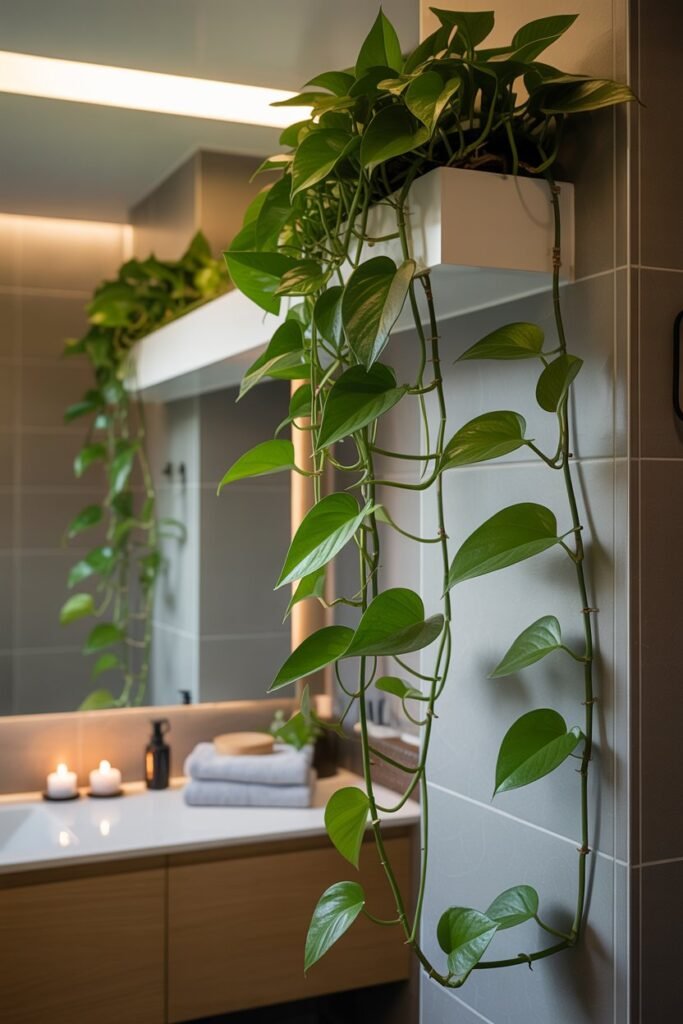
I started with just one vine cutting, and now it’s a full, trailing masterpiece hanging near my window.
How to Grow Pothos in Water:
Start by snipping a healthy stem just below a leaf node (that small bump where roots like to sprout). Remove the leaves closest to the cut end, then place the stem in a clear jar filled with room-temperature water.
Make sure at least one node stays underwater. Keep the jar near bright, indirect sunlight — I usually keep mine by the kitchen sink where it gets soft morning light.
After a week or two, you’ll see roots forming. That’s when things get exciting. I still remember watching mine develop these long, delicate strands like fine hair — it’s oddly satisfying.
Change the water every 7–10 days to prevent stagnation, and if you notice the water getting cloudy, rinse the jar and refill it.
Pro Tip:
If you want your pothos to grow faster, give it consistent light and clean water. Once a month, I add a drop of liquid fertilizer made for hydroponic plants — it’s optional, but it gives the leaves that deep, glossy green look.
And here’s a fun idea: mix different pothos varieties (like golden and marble queen) in one large vase. The contrast in leaf colors looks stunning and grows beautifully together.
2. Lucky Bamboo (Dracaena sanderiana)
Lucky bamboo is the plant equivalent of calm — elegant, structured, and effortlessly beautiful. Even though it’s not technically bamboo, it carries that same tranquil vibe you’d see in a spa or Zen garden.
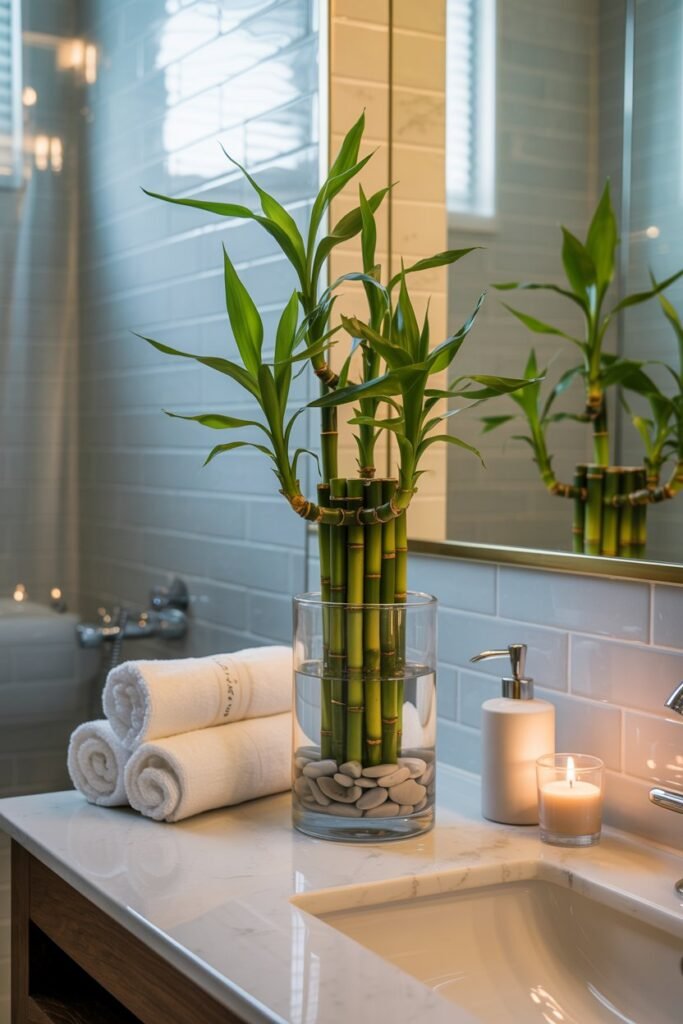
I keep one in my office, and it’s been quietly growing taller for over a year with almost no effort on my part.
How to Grow Lucky Bamboo in Water:
Choose a tall glass vase or ceramic container that allows at least two inches of water to cover the roots. You can add small pebbles or decorative stones at the bottom for stability and style.
Fill it with filtered or distilled water — this part is important because lucky bamboo is sensitive to the chlorine and fluoride in tap water.
Place the vase in a bright, warm spot, but out of direct sunlight. Too much light can scorch the leaves, turning them yellow.
I learned this the hard way when I left mine too close to a sunny window for a week. It bounced back, but I don’t recommend testing its patience!
Pro Tip:
Change the water every two weeks and wipe the inside of the vase to remove any algae buildup. If you want faster growth, keep the room temperature between 65–80°F (18–27°C) and mist the leaves occasionally. A touch of humidity makes them thrive.
I’ve also noticed that lucky bamboo loves stability — once you find a good spot for it, don’t move it around too often. It seems to “settle in” to its environment, and growth becomes more consistent.
3. Philodendron (Heartleaf Philodendron)
Philodendrons are the quiet overachievers of indoor plants — they don’t demand much, yet they reward you with vibrant growth and lush, trailing vines.

When I first placed a few heartleaf philodendron cuttings in water, I didn’t expect much. But within weeks, I had a cluster of glossy green leaves cascading over the jar like a living curtain.
How to Grow Philodendron in Water:
Take a few stem cuttings that include at least one or two leaf nodes. Remove the lower leaves to expose the nodes and submerge that section in water.
Clear glass containers work best because you can watch the root growth and know exactly when it’s time to change the water.
Philodendrons prefer bright, indirect light — a north-facing window or a well-lit corner is ideal. Keep the water fresh by changing it weekly, and rinse the roots gently if you notice any film forming.
These plants grow roots quickly, sometimes within days, so don’t be surprised if you find new leaves sprouting before you know it.
Pro Tip:
Add a small drop of liquid fertilizer every few weeks to encourage faster, fuller growth. I also recommend trimming longer vines occasionally — this not only keeps the shape tidy but stimulates new side shoots, giving your plant that bushy, thriving look.
One of my favorite decorating tricks is grouping philodendron jars together on a shelf at different heights — it creates a cascading, tropical effect that instantly softens any room.
4. English Ivy (Hedera helix)
English ivy has always been one of those plants that make any space feel timeless and cozy. I first tried growing it in water after seeing a photo online of a long ivy vine trailing from a glass jar on a windowsill — it looked effortlessly elegant.
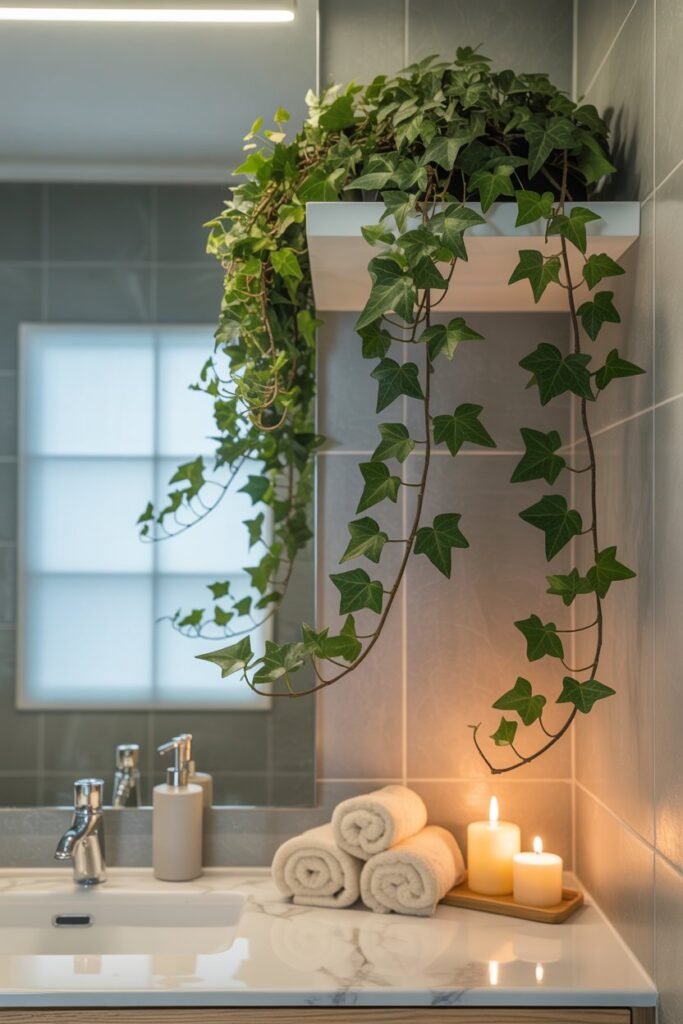
And honestly, that picture didn’t lie. Once you get it started, English ivy grows beautifully in water and develops roots faster than you might expect.
How to Grow English Ivy in Water:
Snip a few healthy cuttings about six inches long, making sure each has several leaves and at least one node. Remove the lower leaves so that the node can sit in the water without rotting.
Place the stems in a glass container with clean, room-temperature water, and keep them in bright, indirect sunlight.
Change the water every week or when it starts to look cloudy. Within two weeks, you’ll see new roots beginning to sprout — delicate, pale strands that will soon turn into a healthy root system.
The great thing about ivy is how quickly it adapts; it doesn’t mind being propagated this way, and it keeps pushing out new growth once established.
Pro Tip:
I like to place my ivy jars on high shelves or hanging baskets where the vines can drape freely. It’s a simple trick that adds instant charm. For faster growth, try adding a small drop of liquid fertilizer every three to four weeks.
Just don’t overdo it — too much can slow things down or cause yellowing leaves.
One more thing I learned the hard way: avoid putting English ivy in direct sunlight. It might look pretty for a few days, but the leaves can burn easily. Keep it in a well-lit, shaded area — that’s where it thrives best.
5. Spider Plant (Chlorophytum comosum)
If you’ve ever seen those cute little “spiderettes” — the baby plants that dangle from a mature spider plant — then you already know how fun these are to grow.
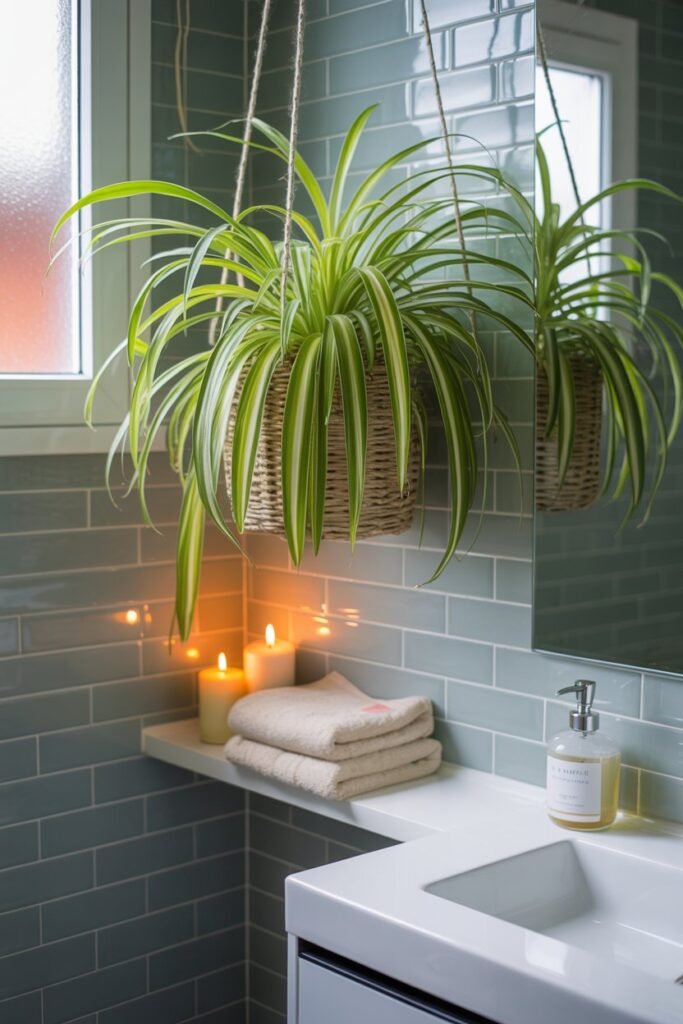
I used to think they were just decorative until I found out that each of those babies could become a whole new plant. And yes, they grow extremely well in water!
How to Grow Spider Plant in Water:
Start with a few spiderettes or small plantlets that already have visible root nubs. Snip them off from the main plant and place them in a jar or bowl with enough water to cover the roots.
Keep the jar in a bright spot with indirect sunlight, and within days, you’ll notice those tiny roots start to extend and strengthen.
I love how resilient spider plants are — they’re forgiving, easygoing, and almost impossible to mess up.
I once left mine in the same water for two weeks by accident (oops), but it didn’t complain. I just gave it a rinse, refilled the jar, and it kept right on growing.
Pro Tip:
Spider plants grow best when the water is slightly oxygenated. If you can, pour out half of the old water and replace it with fresh water every few days. Also, don’t crowd too many spiderettes in one jar — give them space to stretch out.
Once their roots are around 2–3 inches long, you can either keep them in water permanently or transfer them to soil for a fuller plant.
A small cluster of spider plants in clear glass containers makes a bright, refreshing statement on kitchen shelves or bathroom counters. They seem to purify the space visually — and they actually do help clean the air.
6. Coleus (Plectranthus scutellarioides)
Coleus plants are pure color therapy. Their vibrant, patterned leaves can turn any dull corner into a bold, living display. I fell in love with them during one summer when I needed something cheerful for my workspace.

The best part? They root faster in water than most houseplants I’ve ever tried.
How to Grow Coleus in Water:
Choose a healthy stem cutting that’s around 4–6 inches long, and snip it just below a node. Remove any leaves near the bottom, leaving at least two to three leaves on top. Place it in a jar of clean water, ensuring the node stays submerged.
Coleus loves warmth and light, so place the jar near a sunny window where it gets bright but indirect rays. In just a few days, you’ll see tiny roots forming. Within two weeks, those roots can grow long enough to support a thriving plant.
Pro Tip:
To keep your coleus bushy and full, pinch off the growing tips occasionally. It encourages branching and gives your plant a rounder shape. I also like to rotate the jar every few days so all sides get equal light — this helps prevent the plant from leaning in one direction.
One personal trick I’ve learned: use colored glass jars for coleus cuttings. It not only adds to the display but also helps protect the roots from too much light, which can slow their growth.
My current setup includes a deep amber bottle on my desk with a purple coleus cutting — it’s such a mood booster.
7. Wandering Jew (Tradescantia zebrina)
Wandering Jew, with its metallic purple and silver-striped leaves, is one of those plants that look exotic but are surprisingly easy to care for.
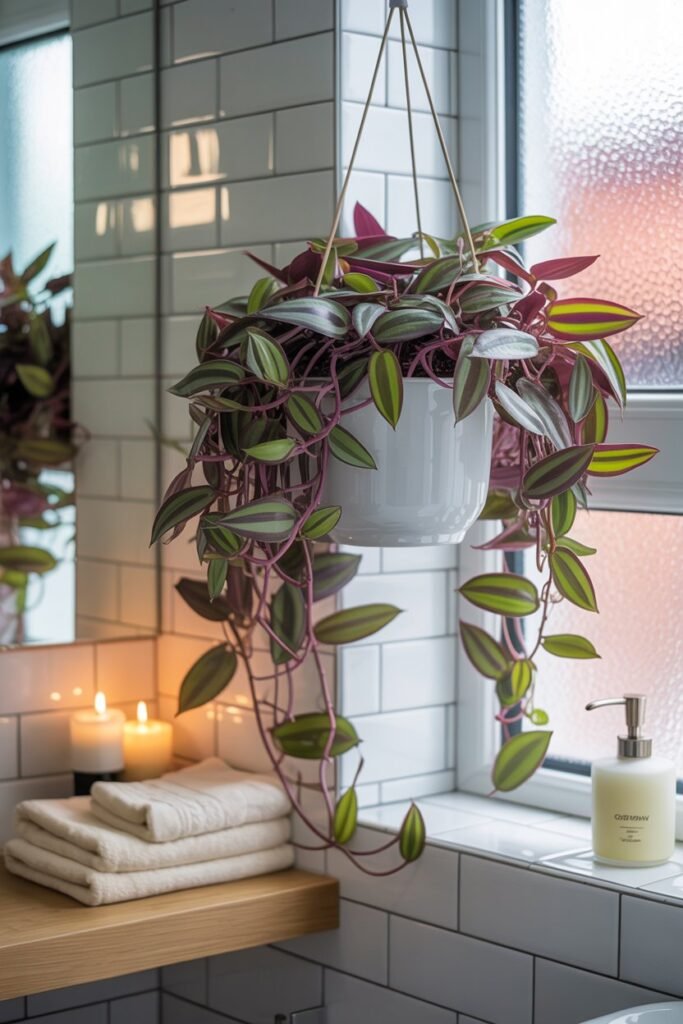
I started growing one in water out of curiosity, and it ended up being one of the fastest growers I’ve ever seen.
How to Grow Wandering Jew in Water:
Take a cutting about 4–5 inches long, snip below a node, and remove the lower leaves. Place it in a jar of clean water and keep it in bright, indirect sunlight.
These plants love humidity, so keeping them near a bathroom window or kitchen area can encourage faster growth.
You’ll usually see roots forming within a week. Once they get going, Wandering Jew plants can double in size in no time.
Their vines can grow quickly and trail beautifully, making them perfect for hanging jars or tall glass vases.
Pro Tip:
To maintain that vibrant purple color, make sure your plant gets plenty of indirect light. Too little light can cause the leaves to lose their color and turn greenish.
I also trim mine regularly to keep it compact and encourage new shoots. If you ever accidentally break a vine (and you probably will — they’re delicate), don’t throw it away. Just pop it into water, and it’ll root all over again.
8. Chinese Evergreen (Aglaonema)
Chinese evergreen plants are stunning, slow-growing beauties that adapt well to indoor life — and yes, they can grow in water, too. They’re the kind of plants that make a space look instantly polished and peaceful.
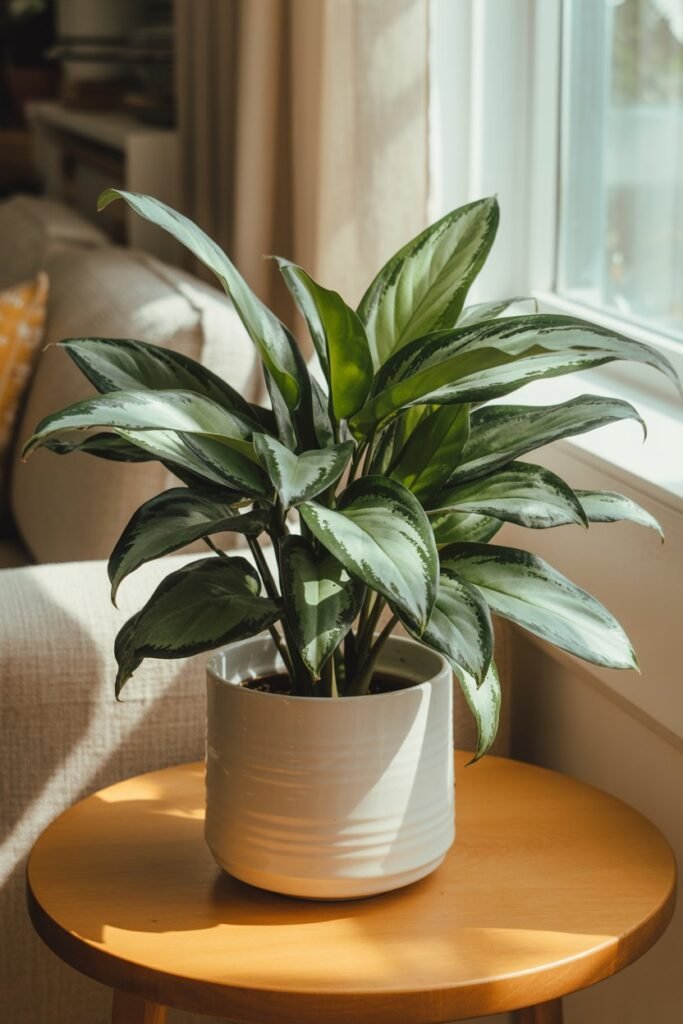
I placed mine in a clear vase filled with water and small pebbles, and it’s been thriving quietly in my living room for months.
How to Grow Chinese Evergreen in Water:
Take a healthy cutting with a few leaves and at least one node. Submerge the stem in a vase with enough water to cover the node, but keep the leaves above the surface to prevent rot.
Change the water every week and wipe the vase clean to avoid algae buildup.
These plants prefer moderate light — too much sun can burn their delicate variegated leaves. I keep mine in a shaded corner that gets filtered light through curtains. It’s been happy there ever since.
Pro Tip:
Use distilled or rainwater if possible. Chinese evergreens are sensitive to harsh chemicals in tap water. For faster root growth, add a few drops of hydroponic fertilizer once a month.
I’ve found that the key is patience — they might start slowly, but once the roots settle, they grow steadily and gracefully.
One of my favorite things about this plant is how effortlessly it elevates a room. A single tall vase with an Aglaonema cutting can act as a minimalist centerpiece that feels both natural and refined.
Frequently Asked Questions (FAQ)
1. Can indoor plants really grow in water permanently?
Yes, many indoor plants can live and thrive in water long-term as long as you keep the environment clean and nutrient-rich. Regularly changing the water and providing enough light are key.
Some plants, like pothos and lucky bamboo, actually prefer this low-maintenance lifestyle once their roots adapt.
2. How often should I change the water for plants grown in jars or vases?
Ideally, change the water every 7–10 days. This prevents bacteria and algae buildup, which can harm the roots.
When you change the water, rinse the container and, if possible, gently clean the roots to keep them healthy and oxygenated.
3. Do I need to use fertilizer when growing plants in water?
While it’s not mandatory, adding a small drop of liquid hydroponic fertilizer once a month can boost growth and give the leaves a richer color.
If you prefer a completely soil-free, low-maintenance approach, your plants will still do fine in plain water — just expect slightly slower growth.
4. Can I use tap water for these plants?
You can, but filtered or distilled water is usually better. Tap water often contains chlorine, fluoride, and other minerals that may slow root development or discolor the leaves over time.
If tap water is your only option, let it sit out for 24 hours before using it — this allows some chemicals to evaporate.
5. Why are my plant’s roots turning brown in water?
Brown roots usually mean the water hasn’t been changed frequently enough, or the container isn’t clean. Remove the affected roots with sterilized scissors, rinse the rest thoroughly, and refill with fresh water.
Keeping the jar away from direct sunlight also helps prevent algae that can cause root decay.
6. Can I transfer water-grown plants back into soil later?
Absolutely. Many plants, such as pothos, philodendron, and spider plant, adapt well to soil after rooting in water.
Just make sure the roots are well-developed before transferring, and keep the soil lightly moist for the first few weeks while the plant adjusts.
7. What type of container is best for growing plants in water?
Clear glass jars or vases are perfect because they let you monitor root growth and water clarity. However, if you notice algae buildup, try switching to tinted or opaque containers that block excess light.
You can also use decorative bottles, test tubes, or ceramic pots with water reservoirs — as long as they’re clean and roomy enough for the roots.
8. Can I keep these plants in dark rooms or bathrooms?
Most water-grown plants still need natural or artificial light to stay healthy. If your bathroom or bedroom doesn’t get much sunlight, place your plants near a bright window or use a small LED grow light.
Lucky bamboo and Chinese evergreen are more tolerant of low-light conditions than others.
Final Thoughts
Growing indoor plants in water is more than just a space-saving hack — it’s a quiet, mindful hobby that connects you to nature in the simplest way.
Watching roots develop and leaves unfurl feels oddly satisfying, especially when you realize how little effort it takes to keep them happy.
Whether you’re decorating your home office, brightening up your kitchen, or adding a touch of life to your bathroom, these eight plants are perfect companions. No soil, no stress — just light, water, and a bit of love.




